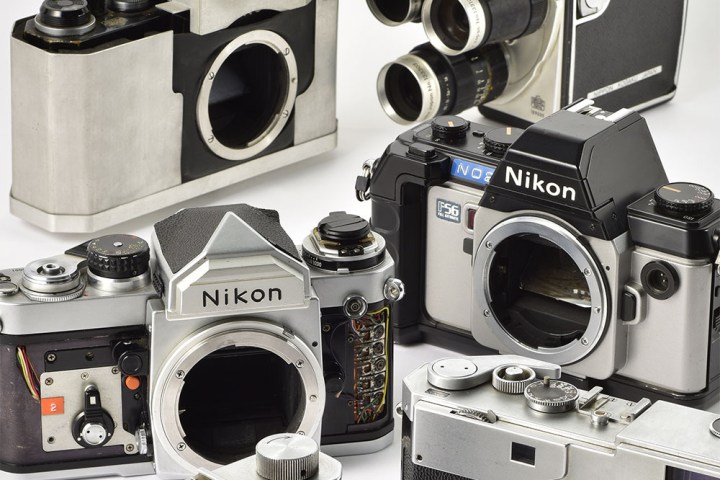
The display will be presented at Nikon’s own museum in Tokyo from April 4 to July 1, the second themed exhibition celebrating the company’s centennial. Dubbed “Prototype Cameras — Developers’ Memories,” the exhibit is set to include around 40 prototype versions, including interchangeable lens cameras and some models that were actually never released.
The prototype cameras are from the 1940s and 1980s, eras that, for Nikon, were filled with twin lens reflex cameras, compact 35mm cameras, rangefinders, and film SLRs, to name a few. The prototype for the Nikon F, one of Nikon’s most popular film cameras, is expected to be among the displays.
The Nikon F, launched in 1957, was a milestone camera because it corrected several of the quirks associated with the interchangeable lens cameras of that time. While earlier SLRs showed the image in reverse, the pentaprism viewfinder displayed the view in the correct orientation with the F, and those viewfinders and focus screens were also interchangeable.
The Nikon F3 prototype from 1975 will also be included, which advanced the F series using an electronic shutter release, a new technology at the time. The camera also offered an aperture-priority auto exposure, instead of the full manual option associated at the time with pro-level interchangeable lens cameras.
Both the Nikon F and F3 were popular cameras — and some film photographers still pick up the older versions. But, the display is also slated to include models that were researched and developed, but never actually sold. Cameras may not always reach the consumer market if problems pop up in development, the market changes, or even if funding changes. And such circumstances are not exclusive to older cameras, either — just this year, Nikon discontinued the DL series before it ever hit the market.
While some of the full versions are still around, many of the prototypes included in the display are very rare. “Each prototype was developed to test and verify new camera designs, functions, and mechanics, and is the embodiment of the hard work and dedication of the developers,” the exhibition announcement reads. “However, since many such prototypes were destroyed after testing, even among company employees only the developers saw them, and there has rarely been an opportunity to exhibit them to the general public.”
The display begins in April at the Nikon Museum in Tokyo, after the conclusion of the current display of camera techniques used in polar regions by famous Japanese adventurer Naomi Uemura.



